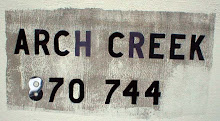(Well, it's new to me.) From Consumer Reports.
Cordless phones are adapting to a world increasingly crowded with wireless and Internet-based devices. New phones can happily coexist with home networks or let you place calls over your cell phone service or the Internet.
One of the most promising developments is the arrival of phones that operate in a different frequency band than WiFi networks, Bluetooth, baby monitors, and other wireless devices. Skirting the congested 2.4- and 5.8-gigahertz (GHz) bands, these phones use the 1.9-GHz band, which is reserved for voice applications. The goal is to eliminate interference with other devices--and our tests showed it did exactly that. The new technology, called Digital Enhanced Cordless Telecommunications (DECT, sometimes called DECT 6.0), also deliver much longer talk time than we've seen before. DECT phones from Philips, Panasonic, GE, and VTech are already on the market. You're likely to see more of these phones, possibly at lower prices, in coming months. Even phones in the heavily trafficked 2.4-GHz band have tackled some of the interference problem. In our tests, "wireless-network-friendly phones," from AT&T minimized or eliminated interference by avoiding portions of the band used by WiFi networks (though they still may cause interference to other wireless products).
In another trend, a few cordless models can stand in for your cell phone. By placing your cell phone near the cordless phone's base, you can access your wireless service via Bluetooth technology and use your cordless handset to make or take cell calls. Besides the convenience of using one cordless handset for all your calls, you may get better cell-phone reception within your home. (For example, if you don't get cell service in you basement, you may be able to make or take calls from there using the cordless handset.) It also makes it easier to use whichever account offers unused talk time.
Other cordless models let you switch between traditional landline and Internet phone service, also known as VoIP (Voice over Internet Protocol). Such phones have a regular phone jack and an Ethernet jack for hookup to your home network. Heavy long-distance users can save big with VoIP if they have the required high-speed Internet access. Plans offered by cable companies typically include unlimited domestic calls for about $20 a month, plus comparatively low-cost international calls. Some phones have VoIP service, such as Skype, built in. Unlike cable-based VoIP services, Skype is a peer-to-peer service that lets you call any Skype subscriber in the world for free. Connecting with non-Skypers in the U.S. is also a bargain-$90 a year. . . .
AT&T, GE, Panasonic, Uniden, and VTech account for most of the market. VTech owns the AT&T Consumer Products Division and now makes phones under the AT&T brand as well as its own name. The current trends include phones that support two or more handsets with one base, less expensive 2.4- and 5.8-GHz analog phones, and full-featured 1.9, 2.4 and 5.8-GHz digital phones. Many phones now include an additional handset with a charging cradle, often with an option to add more (digital models only). More than a third of the cordless phones sold include a digital answering machine. Price range: $15 and up for single-handset phones, $50 and up with built-in answering machine; $25 and up for multiple-handset phones, $80 and up with built-in answering machine. . . .

2 comments:
Yes, the new 1.9-GHz DECT technology is very impressive. My old phone would buzz loudly if I ever got too close to the wireless router. Then I bought one of those Vtech 6031 phones and it stopped happening completely. If you have interference problems, go with a DECT phone.
I love it. Thanks for your comment.
Post a Comment